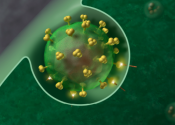Study shows how HIV copies itself in the body
HIV replication in the human body requires that specific viral RNAs be packaged into progeny virus particles. A new study has found how a small difference in the RNA sequence can allow the viral RNA to be packaged for replication, ...
Dec 15, 2021
0
76








